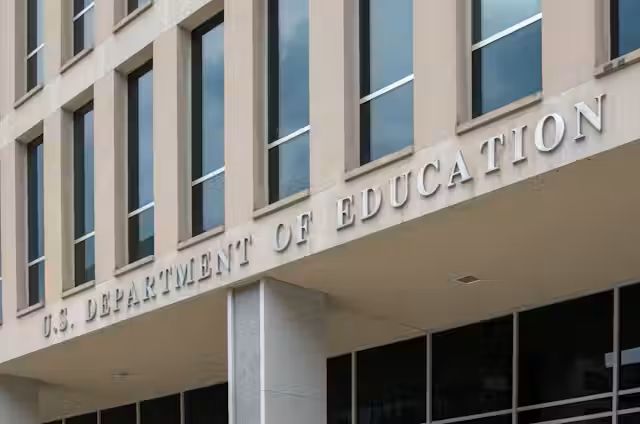Last Updated on February 15, 2025 by Bertrand Clarke
In a significant development, the U.S. Department of Education has issued a formal directive to state education departments, emphasizing the urgent need to eliminate diversity, equity, and inclusion (DEI) policies from public education systems. This letter, undersigned by Craig Trainor, acting assistant secretary for civil rights, outlines the potential consequences for institutions that fail to adhere to these guidelines, including the risk of losing federal funding.
The missive, dispatched to education departments across all 50 states, stipulates that recipients have a narrow window of 14 days to align their policies with federal civil rights regulations. The communication reflects a pressing concern within the Department regarding what it perceives as pervasive instances of both overt and covert racial discrimination that have permeated educational institutions nationwide.
The Department’s stance is rooted in a recent Supreme Court ruling in the case of Students for Fair Admissions v. Harvard. This pivotal decision concluded that Harvard University’s affirmative action policies, which allowed for differential treatment of applicants based on race, were in violation of the Equal Protection Clause of the Fourteenth Amendment. The Department argues that this precedent should be applied universally across educational settings, reinforcing the principle that race should not be a determining factor in student treatment or admission processes.
“Institutions that fail to comply with federal civil rights law may, consistent with applicable law, face potential loss of federal funding,” Trainor stated. This serves as a stark warning to state education departments, indicating that adherence to these revised standards will be closely monitored.
The letter highlights the Department’s assertion that the implementation of DEI initiatives often leads to discriminatory practices that contravene established civil rights legislation. It specifically calls attention to what it describes as the “nebulous goals” associated with these policies, such as diversity, racial balancing, social justice, and equity. The Department contends that the legal framework is unequivocal regarding the treatment of students, emphasizing that students must not be evaluated or categorized based on race.
The implications of this directive are profound and far-reaching. If state education systems fail to modify or rescind their DEI policies, they could face severe financial repercussions, potentially undermining their operational capabilities and resource allocation across schools. This ultimatum raises critical questions about the future of DEI initiatives, which have been a focal point in contemporary discussions on educational reform and societal equity.
Advocates for DEI may view this development as a regressive step that threatens progress made in promoting inclusivity within educational environments. They argue that diversity and equity initiatives are essential to fostering a learning atmosphere that respects and acknowledges the varied backgrounds of all students. In contrast, opponents may argue that such initiatives can compromise the meritocratic principles that underpin educational admission processes.
A broader public discourse is now likely to unfold as stakeholders—including educators, administrators, policymakers, and parents—navigate the implications of this directive and how it will transform the educational landscape. The urgency of the situation compels an immediate response from state education departments, many of which have invested significant resources into developing and implementing DEI initiatives in recent years.
Furthermore, the Department of Education’s directive reflects a broader trend in the national conversation surrounding race and education. As institutions grapple with the complex interplay of race, equality, and educational access, the role of federal oversight in shaping policy will undoubtedly remain in sharp focus.
This crucial decision has sparked widespread debate about the balance between federal authority and state autonomy in implementing educational policies. As educators strive to create inclusive environments, they now face the added challenge of adhering to federal mandates while addressing the diverse needs of their student populations.
In summary, the Department of Education’s warning to state education departments marks a pivotal moment in the ongoing dialogue about race and equity in education. With the potential loss of federal funding hanging in the balance, state authorities must act swiftly to reassess their policies, reflecting on the intricate legal and ethical considerations at play. Moving forward, the education community must engage in meaningful discussions on how best to support all students without infringing on civil rights protections. The outcome of this directive could shape the future of public education in profound and lasting ways.










